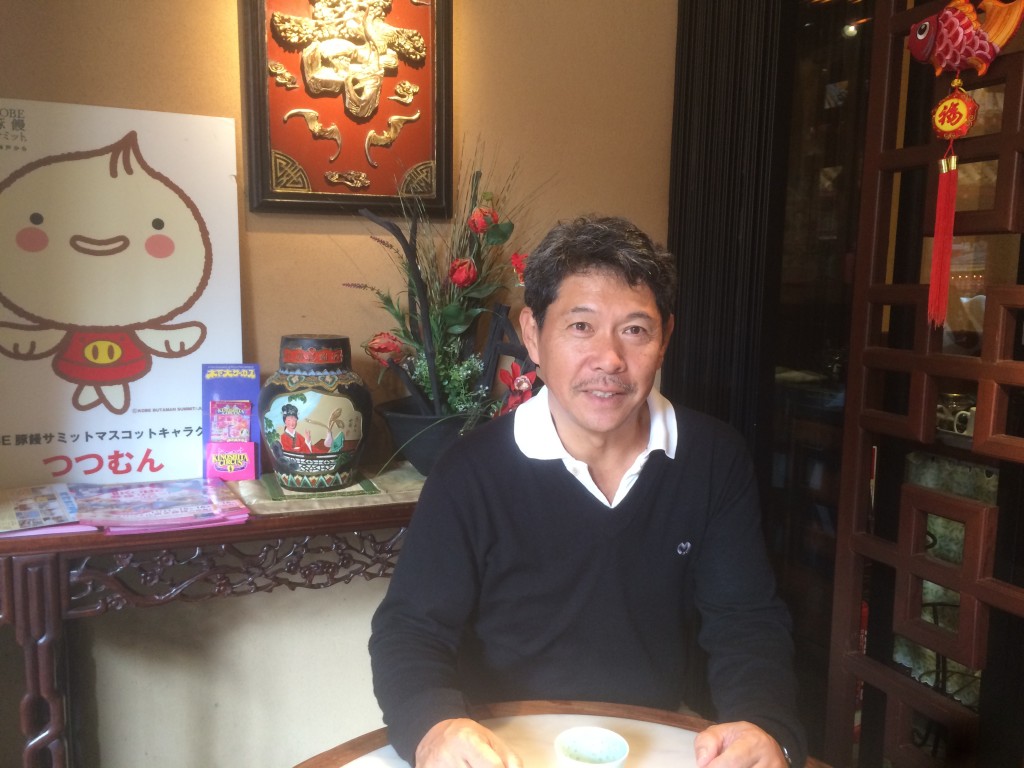
Nankinmachi is the famous Chinatown of Kobe City, which was affected by the Great Hanshin-Awaji Earthquake. Roushouki in the town has been in business since 1915, originally called “Buta-manju.” The Kobe Butaman Summit was founded there four years ago.
Eisei So, the third owner of Roushouki and the chairman of the Nankinmachi Shopping District Promotion Association, was 37 years old when the earthquake struck. He was working hard in his mid-career at his store and as the vice-chairperson of the Association. On January 16, 1995, Mr. So was working late into the night to prepare for the Shunsetsu Festival, an event to celebrate the Chinese New Year. When he arrived home after finishing work and drinking at a yakitori restaurant by himself, it was already after midnight. Just a few hours after falling asleep, he was awakened by the major earthquake.
“When I sprang out of bed, I saw the water heater of my condominium falling down and steaming, and my room became like a steam bath. Because, apparently, all the water heaters of the condominium building were broken, hot water was coming down from the upper floors. Then I saw the first floor of the taxi company’s building in front of my condominium squashed by the ceiling. When I went outside, I also saw a lot of completely destroyed buildings. I have realized that a terrible thing had happened. Then right away, I ran to confirm whether my family was safe. We slept in a junior high school that was opened to the public as a shelter.”
At the shelter, a girl beside Mr. So kept crying because her house had collapsed and the money kept there had been stolen. Mr. So and the chairman of the Association at the time, who was also at the shelter, faced the reality that there was no time to think of the festival. Fortunately, Nankinmachi did not suffer major damage and the building of Roushouki was safe enough to stay in, so that 17 people started living together on the second floor.
“We gathered at a meeting room of the town on January 25 to discuss what we had to do as a team rather than as individuals, although the festival could not be held. A director proposed, ‘Let’s hold a soup-run instead of the festival, because what people need the most now is meals.’ Our project ended up a success, seeing many people enjoying the meals.”
At the same time of the soup-run, they held a fund raising campaign. They raised about 470,000 yen and donated it through a social welfare council. Since many media outlets visited Nankinmachi to report on their project, the town regained its prosperity.
Declaring the comeback of Nankinmachi
Because of the soup-run held instead of the Shunsetsu Festival, Nankinmachi seized an opportunity to be revitalized. Having seen the affected people in Kobe enjoying the event that much, Mr. So and his team thought that they had to take a lead in the recovery efforts, since they found that Nankinmachi had suffered less than other areas.
When essential public utilities recovered in March 1995, Nankinmachi declared its comeback. The town held some events, including a Shishimai performance (a traditional lion dance), which were for only a short time but lavish.
“I was afraid that many people would leave Kobe due to the earthquake. I couldn’t operate my business, because I saw few visitors in the town. I once thought about moving my store to Osaka. I, however, saw grilled meat selling like hotcakes when a store started operation right after the earthquake, as well as vegetables quickly being sold out when a middle-aged woman who ran a vegetable shop placed them on the shelf, which she was about to throw away. At that moment, I realized people came alive thorough businesses and decided to reopen my store, since I found it difficult to continue holding soup-runs.”
Following the efforts made by Mr. So, many of the stalls in Nankinmachi resumed business at once, and the town was revitalized quickly by itself. In response to the request to hold some sort of event led by Nankinmachi in May 1995, instead of the canceled Kobe Festival, it held the May Festival together with the Motomachi Shopping District. Despite the heavy rain, more than 50,000 people visited the festival. This was the moment when an event led by private groups took the lead in initiating recovery projects.
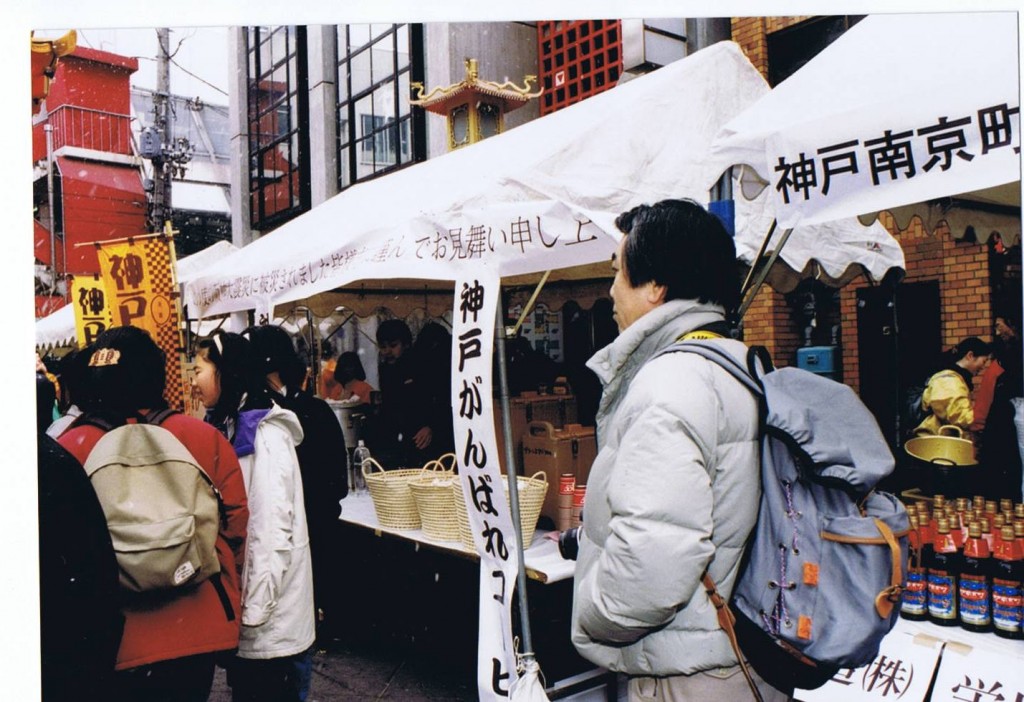 Photo: Nankinmachi promptly initiated recovery efforts after the earthquake.
Photo: Nankinmachi promptly initiated recovery efforts after the earthquake.
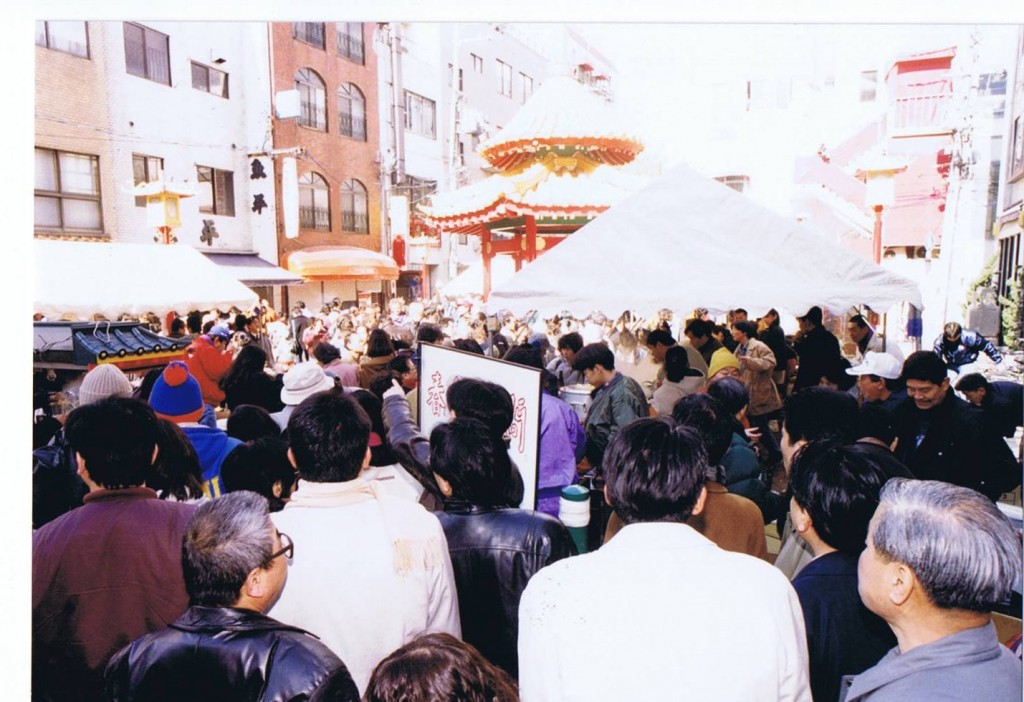 Photo: A lot of local people expressed thanks for the soup-run.
Photo: A lot of local people expressed thanks for the soup-run.
Mr. So had another unforgettable experience. In February, just after the earthquake struck, people from Yokohama Chinatown visited Nankinmachi with donations. Since the Shinkansen was not fully in operation, they had to make connections between regular lines to get there. Some people in Yokohama Chinatown claimed that they should refrain from holding their own festival in response to the tragic disaster. Yokohama Chinatown, however, decided to hold the festival, since it could serve as an opportunity to raise money for the affected areas. Some 5,000,000 yen raised by the campaign was donated to reconstruct the Choanmon Gate, which was destroyed by the earthquake.
Mr. So said that people from Yokohama Chinatown looked very surprised when they arrived in Nankinmachi through Sannomiya to see the town showing signs of recovery with a lot of visitors. When Mr. So expressed thanks for the donations, they replied, “We just returned the favor. People in Kobe helped us when the Great Kanto Earthquake struck.” This touched his heart, since they placed great value on the relationship built a long time ago beyond generations.
Voluntary movements, rather than voluntary self-control, lead to recovery.
Following the immediate actions taken by Mr. So and his team just a few months after the disaster, many events, such as a pottery market and Rakugo (traditional Japanese comic story telling) performances, led by volunteer groups from other prefectures were held one after another at the open space in Nankinmachi. Mr. So reflects that the success of private events held by his team and other local people may have removed the mood of voluntary self-control in a way, while the government was struggling with reconstruction projects.
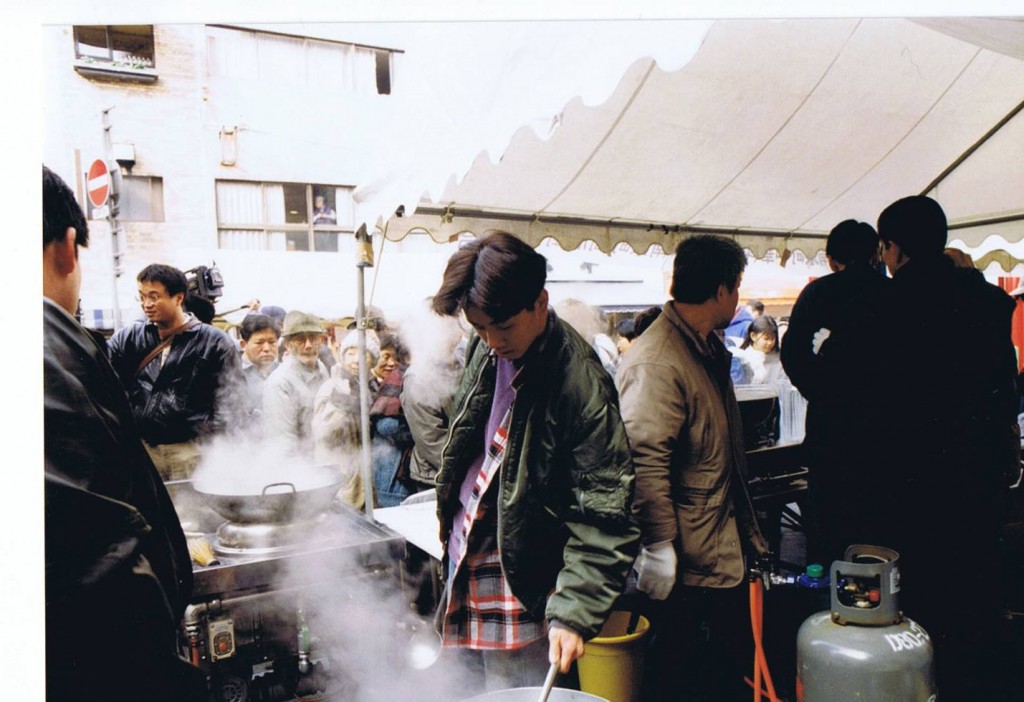 Photo: Nankinmachi has succeeded in embodying its desire to create a lively atmosphere rather than a mood of voluntary restraint.
Photo: Nankinmachi has succeeded in embodying its desire to create a lively atmosphere rather than a mood of voluntary restraint.
“The earthquake reminded me how happy I was to have ordinary things, such as customers, gas, water, neighbors, and family ties. To be honest, I wasn’t in the mood, sometimes before the earthquake, to prepare for the festival, because there were too many things to work on. Now I feel lucky to hold the festival every year.
When the Great East Japan Earthquake struck in 2011, his team was engaged in reconstruction activities as volunteers in the Tohoku region. Their experience of the Great Hanshin-Awaji Earthquake greatly contributed to their support activities, leading to practical words and actions.
“I believe that what we say, as survivors of the major earthquake, means a lot to people affected by the Great East Japan Earthquake, unlike words from people who have never gone through such a disaster. There are things that only people who have experienced a major disaster are allowed to say, which other volunteers usually hesitate to point out. We are the only people who can say, ‘Take action as soon as possible to get your community back on track. You have to take a lead over the government, instead of relying on them,’ as well as ‘Don’t give up. You will find a ray of hope by making a little more effort.’ Rather, I believe it is our responsibility to say those things.”
The Kobe Butaman Summit—energizing Japan starting with Kobe
Every year, many people visit the Kobe Butaman Summit founded by Mr. So and his team. In addition to the many events, such as the Miss Kobe Butaman Contest, and the limited sales of original butaman (pork buns), there is a fund raising campaign to support reconstruction projects in the Tohoku region. The Kobe Butaman Summit 2014 was held on a grand scale over three days, under the slogan, “energizing Japan starting with Kobe.”
This Summit was originally planned in 2010, a year before the Great East Japan Earthquake struck, to stimulate Kobe City and the Butaman industry. The 2011 earthquake led Mr. So to work to energize Japan, which tends to be in a depressed mood, as well as to support the Tohoku region, starting by revitalizing Kobe.
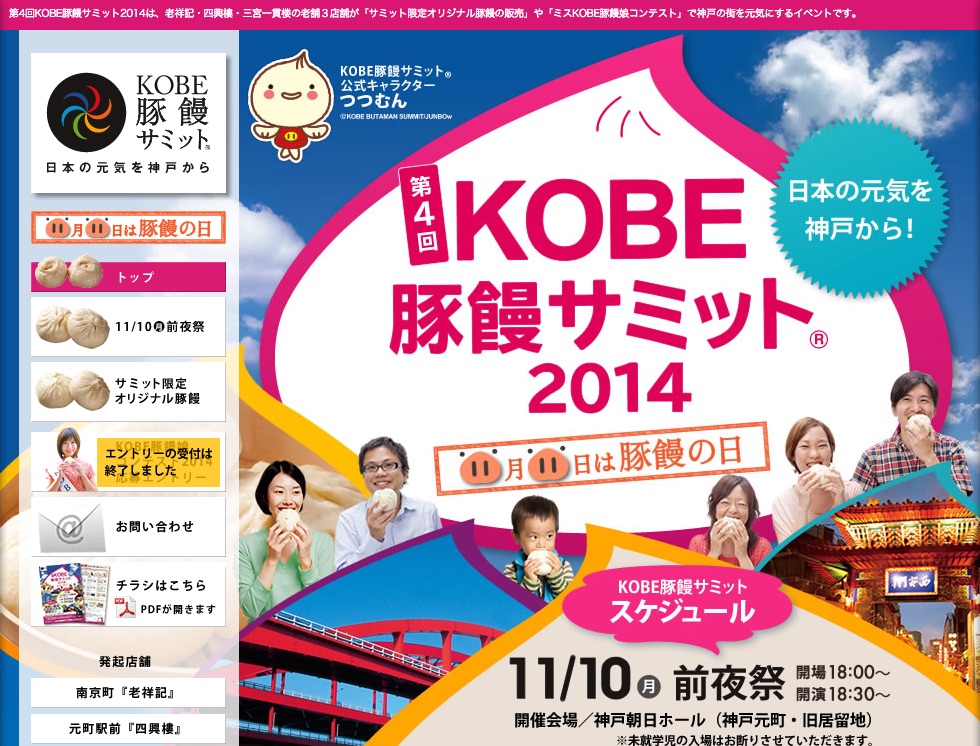
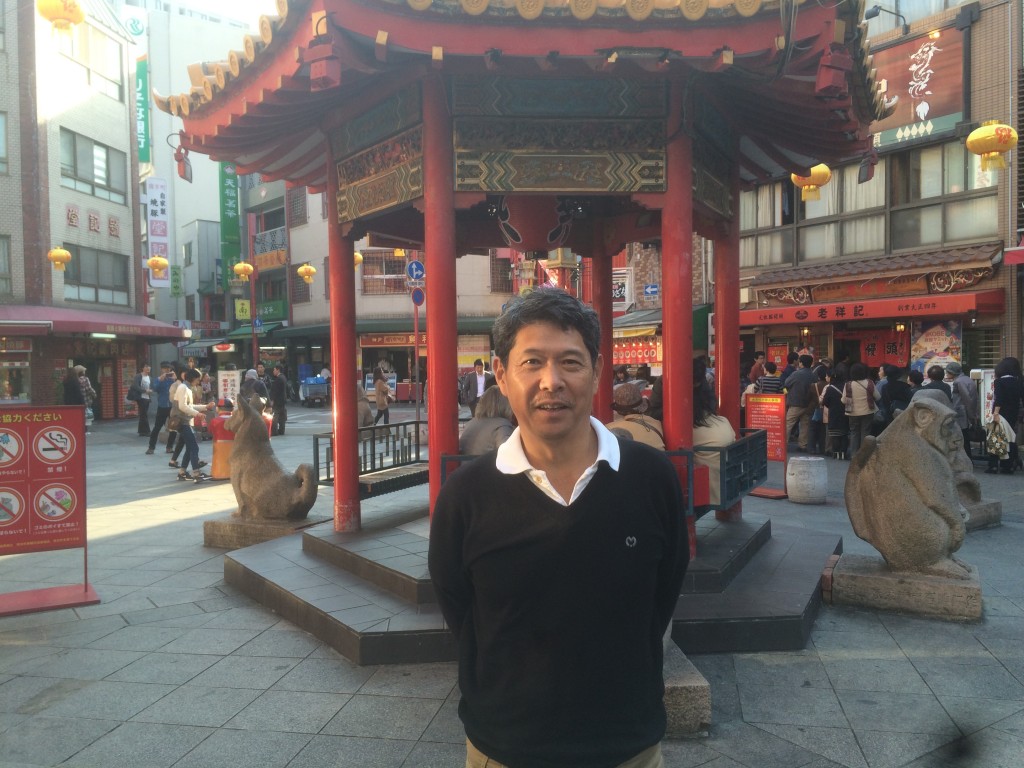
“Delivering lectures on my experience of the Great Hanshin-Awaji Earthquake and participating in various councils, I have come to believe that one of the keys to achieve recovery is to have a sense of fun. Beside practical measures, there should be exciting things and challenges that help to break stereotypes. I am confident that Kobe can serve as a role model.
Kobe has lived through the tragic disaster, and even been ranked among the top cities in the world where people want to live. I want the government to further promote Kobe to the world, by leveraging the capability to deliver messages that the towns and people of Kobe possess. Recently, Japan has seemed to be governed by various regulations, which is basically right. I, however, believe that if we are to create a better community, there needs to be a little more room for the nation to take action regardless of the rules.”
These words can come only from Mr. So, who has witnessed the power of ties between people and communities, as well as the huge energy generated when people move forward, in the aftermath of a devastating disaster, where nothing was certain and clear.
No one, of course, wants a disaster like the Great Hanshin-Awaji Earthquake to happen again. We, however, have a responsibility to leverage what we have learned from the devastating events for the future.
Mr. So says he was not very good at getting along with people. However, when the earthquake struck, he realized how strong the ties in his community were, and started to work actively to create a better community. He suggests, “I want you to strengthen relationships with people who you believe are trustworthy in your daily life. Such ties will help you move forward even in difficult times with hope.”
What Mr. So told us can be seen in today’s Nankinmachi filled with visitors.
(Interviewed and written by Yoshihito Higashi)
This article was created with the cooperation of
greenz.jp.
![]() a pork bun shop owner
a pork bun shop owner JP | EN
JP | EN JP | EN
JP | EN
 Photo: Nankinmachi promptly initiated recovery efforts after the earthquake.
Photo: Nankinmachi promptly initiated recovery efforts after the earthquake. Photo: A lot of local people expressed thanks for the soup-run.
Photo: A lot of local people expressed thanks for the soup-run. Photo: Nankinmachi has succeeded in embodying its desire to create a lively atmosphere rather than a mood of voluntary restraint.
Photo: Nankinmachi has succeeded in embodying its desire to create a lively atmosphere rather than a mood of voluntary restraint.
